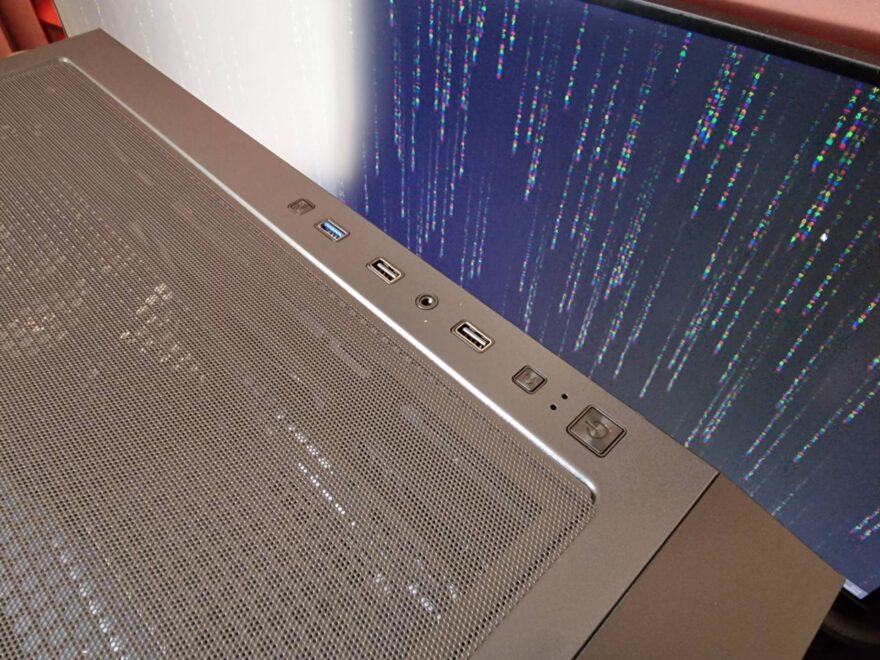Antec AX90 Mid-Tower Case Review
Peter Donnell / 2 years ago
A Closer Look – Exterior
Antec has been on a bit of a winning streak when it comes to their case designs, and I’m happy to say that still holds true. The AX90 is one fantastic-looking PC case, and while it’s not exactly offering anything new to the PC gaming tropes of 2023, it still looks cool. There’s a large tempered glass window down the left side, so if you like to show off your build, you can certainly do that.
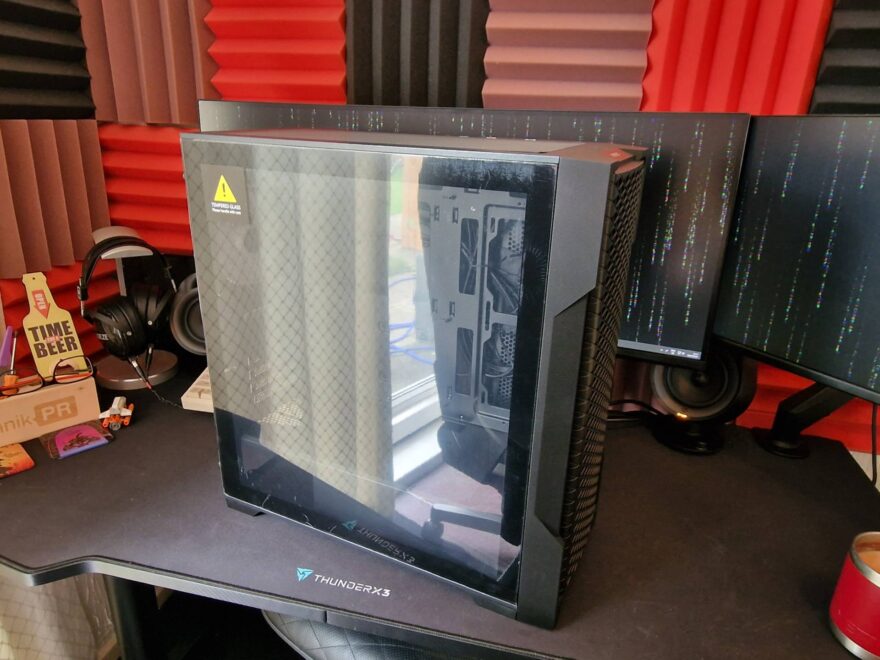
The right side is a durable steel panel, and as you can see, it has additional ventilation towards the front, allowing for up to 2 x 120mm fans to be installed on the side of the case.
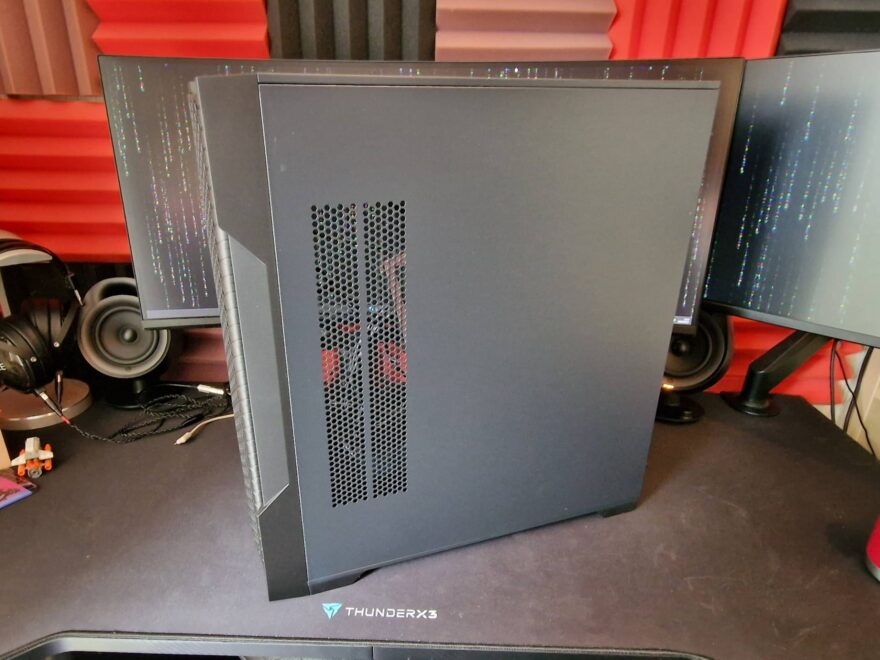
The front panel has a whole lot going on though, with a mesh design that looks like a load of cut diamonds laid sideways. It’s a very visually distracting design, but hey, if you’re building a PC with RGB fans and a clear tempered glass window, it’s hardly going to be a visually quiet build anyway. The front panel does offer up a lot of airflow though, so it will be great for modern high-performance gaming hardware.
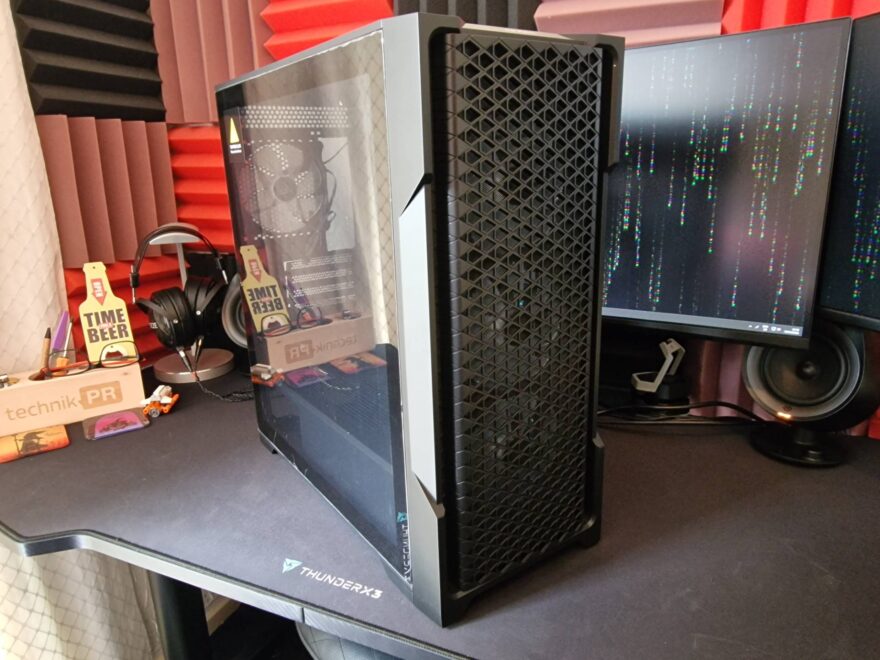
Around the back, you get a little extra ventilation towards the top of the case, as well as a 120mm fan mount next to the motherboard I/O. The fan mount features elongated screws, so you can adjust the height; handy for improving AIO cooler support.
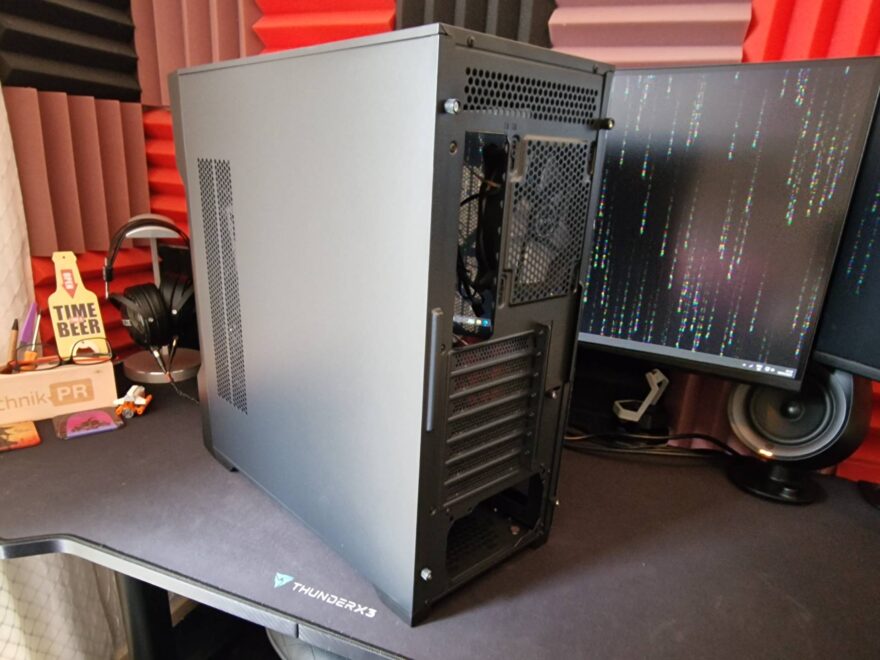
There are seven expansion slots, each fitted with snap-off covers, which I hate, but I can appreciate Antec are trying to hit a price point here.
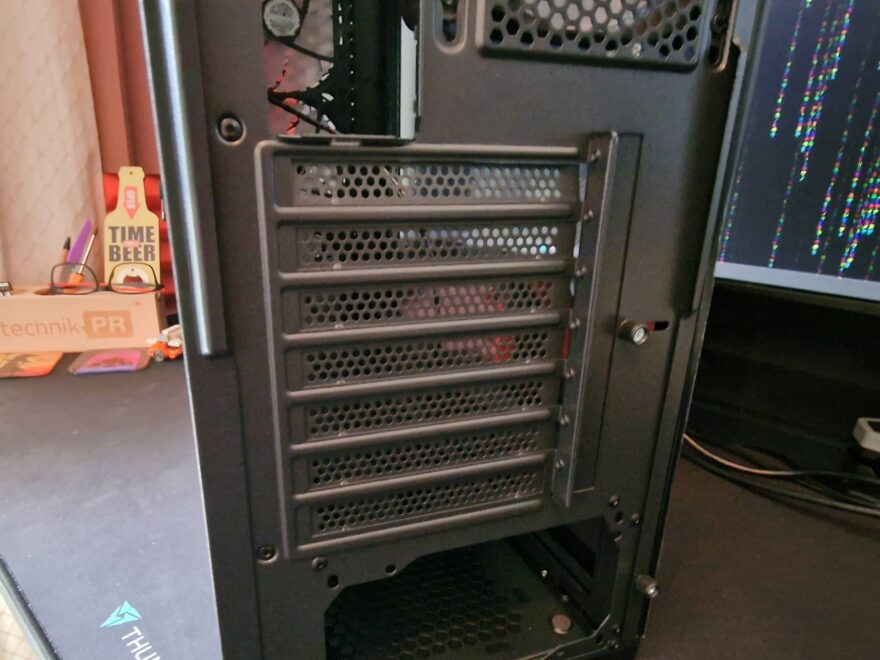
Finally, at the bottom, there’s an ATX PSU mount which supports standard and inverted mounting.
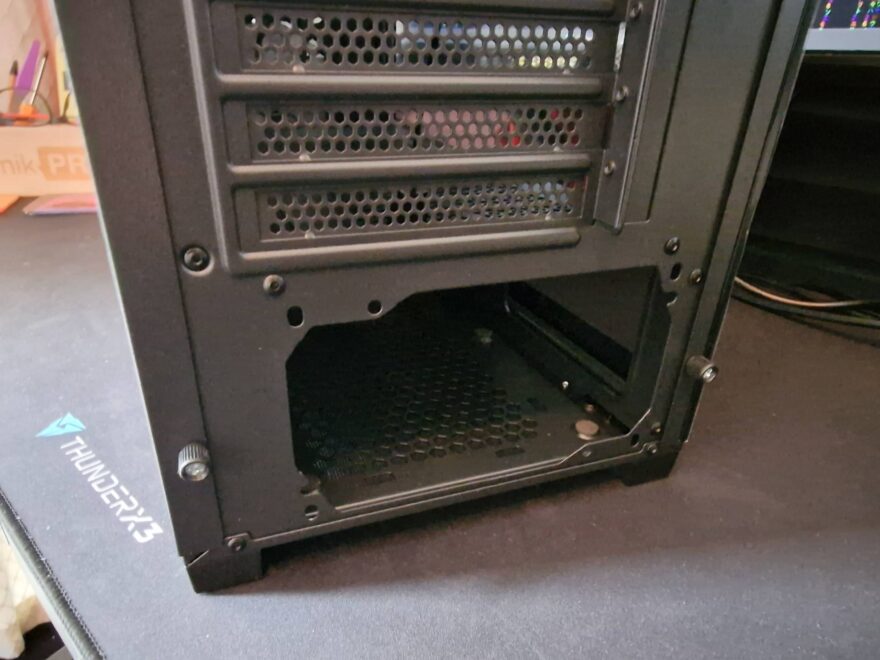
The top panel looks great, with a huge dust filter that runs from front to back, allowing for a significant amount of airflow in the top of the case.
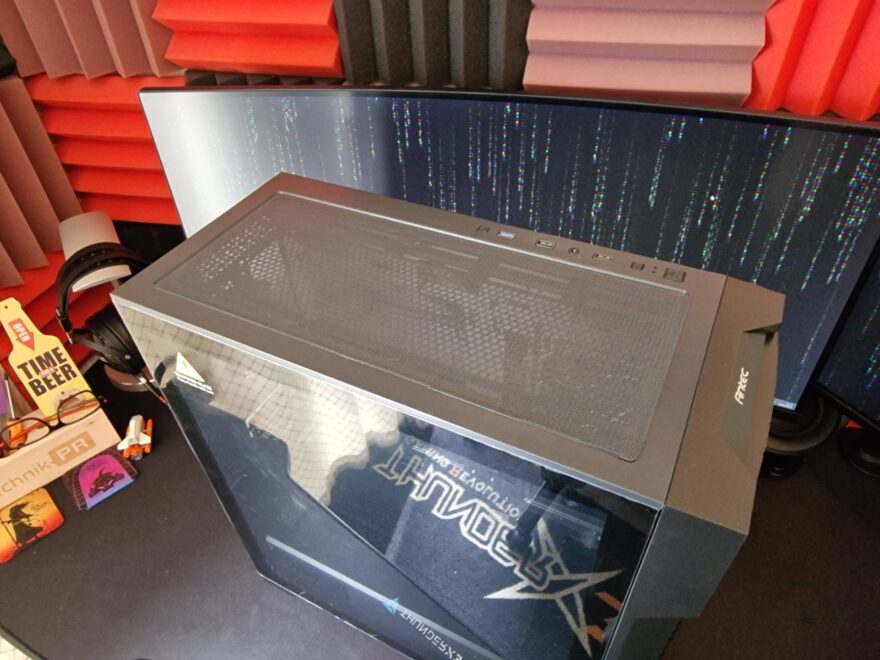
The magnetic filter is easily removed, allowing for quick and easy cleaning. You’ll find room to install up to 2 x 140mm fans or 3 x 120mm fans on the top, of course, that also means 120/140/240/280/360mm radiators are supported too.
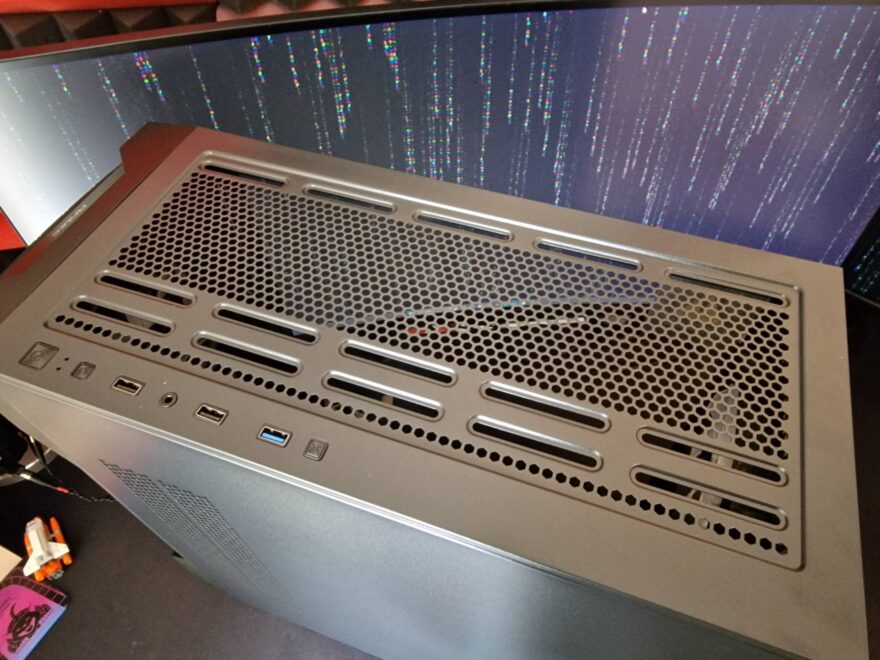
The front I/O is spread out quite a bit, with all the usual power controls towards the front, followed by three AUB ports and the audio jack going as far back as the middle of the case.
